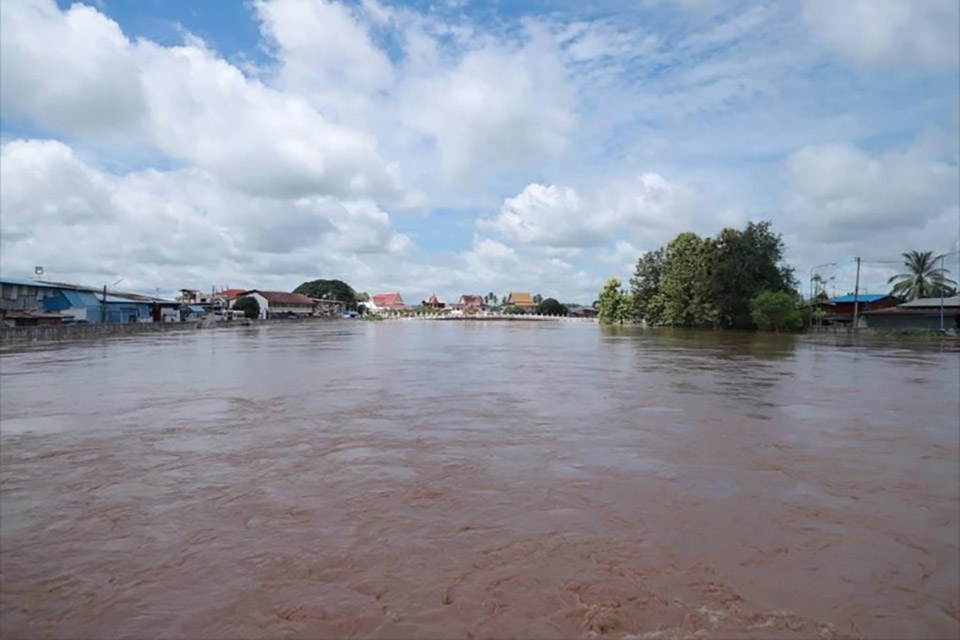
SUKHOTHAI, Thailand – The situation surrounding the Yom River, particularly the flood management efforts from Phrae to Sukhothai, remains highly concerning on 25 August. Originally, the water flow rate was predicted to be around 1,400 cubic meters per second. However, due to heavy rainfall on the night of 24 August in Long and Wang Chin districts, the volume of water from Phrae flowing toward Sukhothai has increased significantly. By 9:00 AM, the water flow rate at Wang Chin was recorded at 1,668 cubic meters per second and is expected to rise to 1,700 cubic meters per second. This surge has not yet reached its peak at Si Satchanalai District in Sukhothai.
Regarding water flow management at the Hok Baht floodgate in Si Satchanalai District, the latest data from the Royal Irrigation Department (25 August) indicates that water is being diverted in two directions: to the Nan River and the old Yom River, with a combined flow of 433 cubic meters per second. However, this exceeds the capacity of the waterways, leading to breaches in flood barriers along the Yom-Nan canal.
Wattanasak Supaking, Director of the Water Resources Technology and Information Promotion Division at the Water Resources Information Institute, noted that when the 1,700 cubic meters per second surge from Phrae reaches Si Satchanalai, even though the Hok Baht floodgate can divert 400-500 cubic meters per second, there will still be around 1,200 cubic meters per second flowing through. The Yom River gradually narrows from Si Samrong District, which can handle 800 cubic meters per second, to Mueang District, where the river’s capacity drops to only 500 cubic meters per second. This creates a high risk of severe flooding in Sukhothai’s urban areas.
“Looking at the hourly data, the flow rate at Wang Chin is steadily increasing, meaning the peak water volume from Phrae is likely to exceed 1,700 cubic meters per second and has not yet reached the Hok Baht floodgate in Si Satchanalai. The current overflow in Si Samrong and Mueang Districts is not the worst yet. Water levels will rise further, and based on monitoring stations from Sawankhalok, Si Samrong, down to Mueang District, the flow rates are climbing continuously. Therefore, Sukhothai residents should prepare to evacuate and move valuable belongings to safer locations as soon as possible.”
Another critical factor is rainfall, which is expected to increase across Thailand from 26 to 28 August, particularly in the northern provinces of Chiang Rai, Phayao, Phrae, and Nan, which were already affected by flooding. Rainfall is also expected to increase in Sukhothai, adding further strain to the situation.









